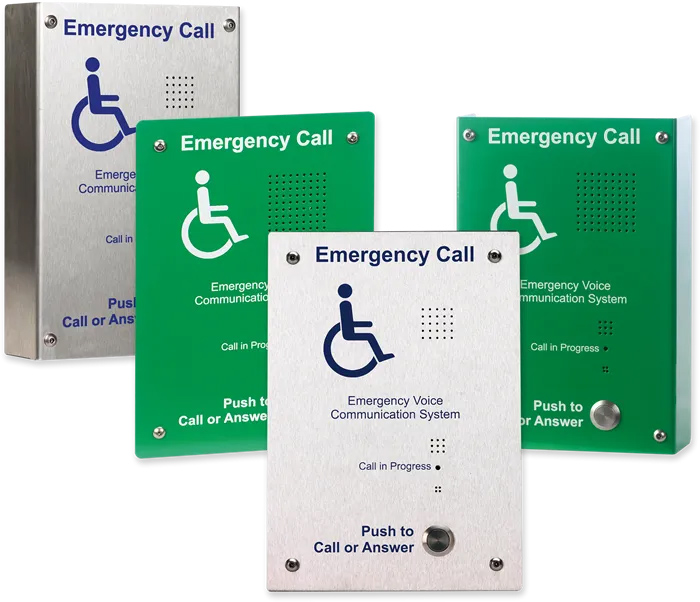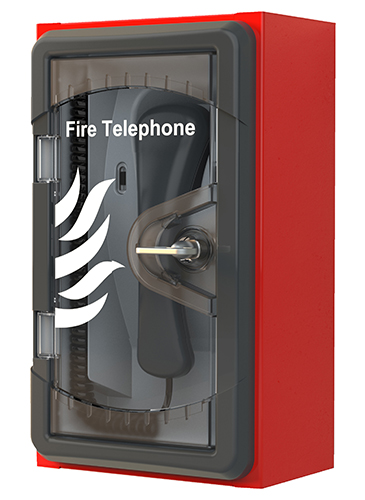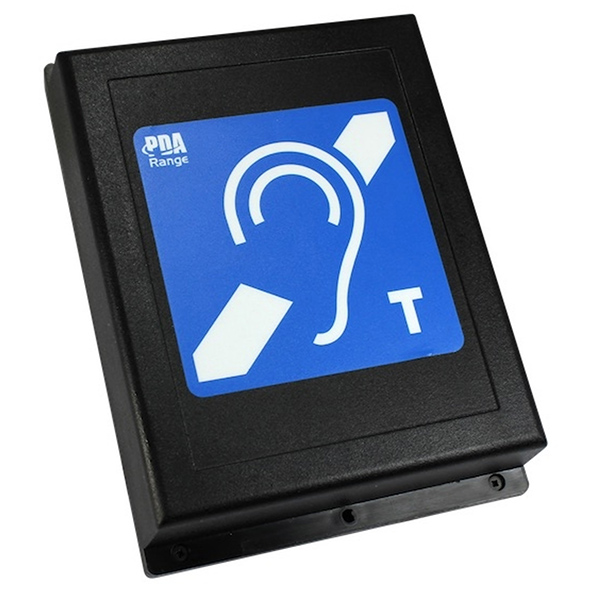Refuge areas must be provided in all new non-domestic buildings with more than one storey to comply with current Building Regulations. Often provided in fire rated stairwells, a refuge area enables anyone who cannot easily use fire escapes and evacuation lifts to wait for help in safety. Slower moving people may feel under pressure from the volume of people behind them whilst descending stairs and a refuge area provides a safe place for them to rest without blocking or hindering the escape route for others.
 |
A Disabled Refuge Emergency Voice Communication (EVC) System is a Life Safety Intercom system which provides two-way communication between the refuge area and building control. Anyone waiting in the refuge area during an emergency evacuation can call for assistance using a wall mounted EVC call point, also known as a Type B outstation. The call is initiated by a simple press of a button and the system provides full duplex speech thereafter, hands free. This direct communication with the control room enables a phased evacuation to be managed safely as rescue teams prioritise refuge areas in places of higher risk. Whilst those waiting are reassured that someone is on the way, it also enables rescue teams to attend with any necessary specialised equipment, such as an EVAC Chair. |
|
An EVC system can also be used as a means of communication by Fire Fighters or Marshals to convey evacuation status updates to the Incident Controller as required. A dedicated Fire Telephone (or Type A outstation) in strategic locations enable 2-way communication via an easy-to-use telephone handset. These are usually mounted inside a highly visible bright red housing which is easy to spot in unfamiliar surroundings or when working in low-level emergency lighting. If located in an area with public access, the box may require a firemans ‘lift key’ to open it, thus preventing tampering. A Fire Telephone system may be 'standalone' or combined with a Disabled Refuge EVC System. Disabled refuge, fire telephone and stadium marshalling systems must all meet the requirements of BS 5839 Part 9. |
 |
 |
A ‘bolt on’ wall mounted induction loop amplifier is also available for connection to Disabled Refuge outstations to assist the hearing impaired – a recommendation of BS 8300. By switching hearing aids or cochlear implants to the 'T' or Telecoil setting, a hearing impaired person will be able to hear instructions from the emergency response team much more clearly - essential when there may be high levels of ambient noise and alarms sounding. The Signet PDA103i loop amp is wall mounted in a water resistant housing which also makes it ideal for use outdoors with Door Access and intercom systems. This can be included with a new EVC system design or added to an existing system at any time. |
Please contact us for help with designing a disabled refuge emergency voice communication system for your new building project. We can also help with Voice Alarm system design, another life safety requirement for public buildings.
In the meantime, you may find the Disabled Refuge Information Sheet download useful. This has been extracted from the SigNet Disabled Refuge Brochure which covers their full 'SigTEL' range.
